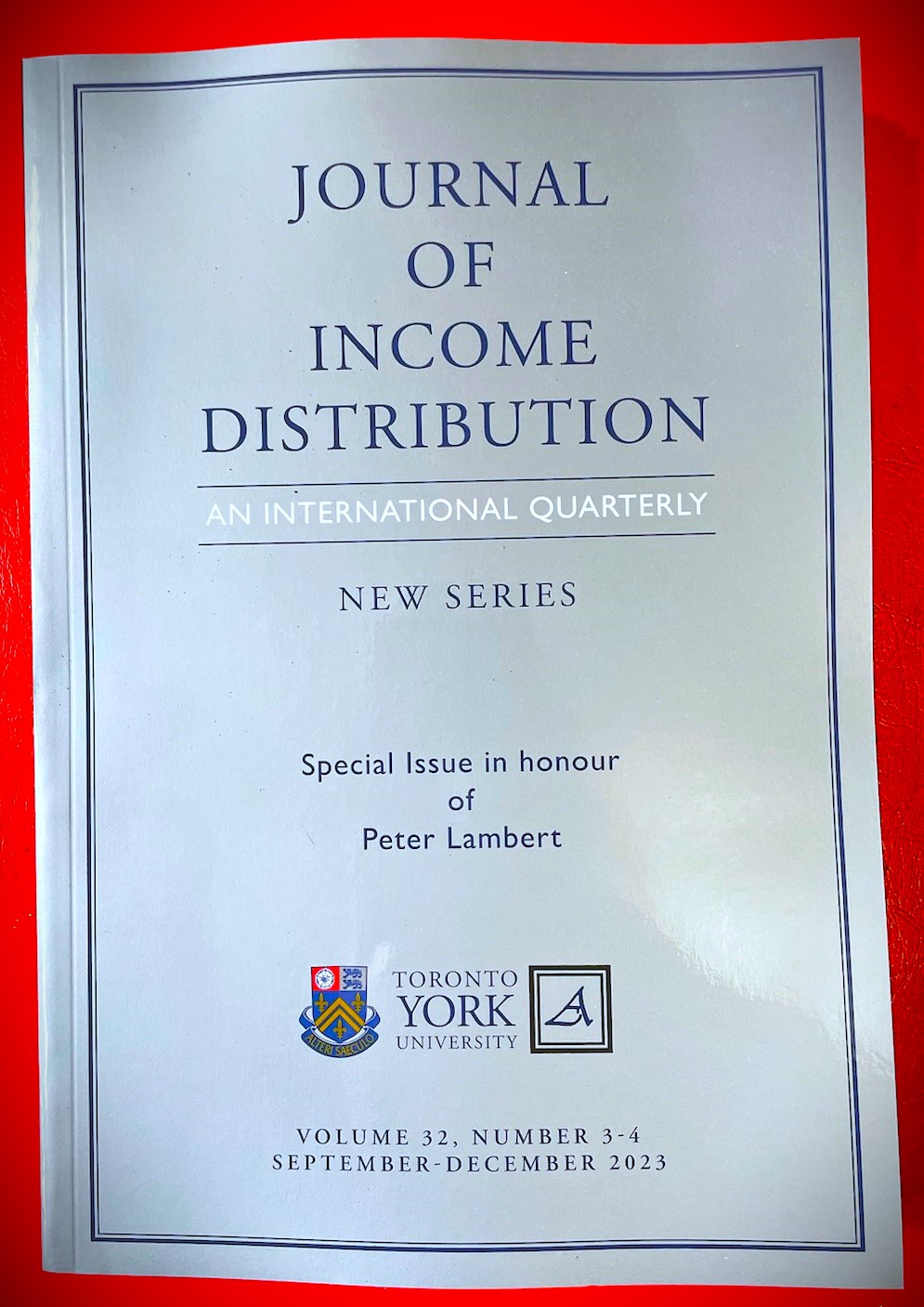Public Health Considerations on the Optimal Sin Tax Under Consumer Heterogeneity, with Implications for Inequality in Health
Keywords:
health inequalities, population health, sin taxesAbstract
We study the optimal choice of sin tax by a public health authority, when the consumption of a harmful good is unevenly distributed across the income distribution. The optimal tax level adjusts away from the level applied when heterogeneity is ignored, according to the degree of relative inequality in the income distribution, as well as non-linearities in the population health and deadweight loss functions. Drawing on findings from the literature on income distribution and redistribution, we compare the impact of the two tax levels on relative inequality in health and participation in unhealthy consumption. Under reasonable assumptions about functional forms, and independently of the distribution of income, we show that the heterogeneity-adjusted sin tax can increase both efficiency and health inequality.
References
Allcott, H., B. Lockwood, D. Taubinsky 2019 “Regressive sin taxes, with an application to the optimal soda tax”, The Quarterly Journal of Economics 134(3): 1557–1626. doi.org/10.1093/qje/qjz017
Anderson, M., M. Drummond, D. Taylor, A. McGuire, P. Carter, and E. Mossialos 2022 “Promoting innovation while controlling cost: The UK’s approach to health technology assessment”, Health Policy 126(3): 224–233. doi.org/10.1016/j.healthpol.2022.01.013
Baeten, S., T. Van Ourti, and E. van Doorslaer 2013 “Rising inequalities in income and health in China: Who is left behind?”, Journal of Health Economics 32(6): 1214–1229. doi.org/10.1016/j.jhealeco.2013.10.002
Capacci, S., O. Allais, C. Bonnet, and M. Mazzocchi 2019 “The impact of the French soda tax on prices and purchases. An ex post valuation”, PLOS ONE 14(10): e0223196. doi.org/10.1371/journal.pone.0223196
Carrieri, V., and F. Principe 2022 “Who and for how long? An empirical analysis of the consumers’ response to red meat warning”, Food Policy 108: 102231. doi.org/10.1016/j.foodpol.2022.102231
Conlon, C., N. Rao, and Y. Wang 2022 “Who pays sin taxes? Understanding the overlapping burdens of corrective taxes”, Review of Economics and Statistics: 1–27. doi.org/10.1162/rest_a_01235
Contoyannis, P., and M. Forster 1999 “The distribution of health and income: a theoretical framework”, Journal of Health Economics 18: 605–622. https://doi.org/10.1016/S0167-6296(99)00002-8
Diamond, P.A. 1975 “A many-person Ramsey tax rule”, Journal of Public Economics 4(4): 335–342. doi.org/10.1016/0047-2727(75)90009-2
—–, and J.A. Mirrlees 1971a “Optimal taxation and public production I: Production efficiency”, The American Economic Review 61(1): 8–27.
—– 1971b “Optimal taxation and public production II: tax rules”, The American Economic Review 61(3): 261–278.
Gye, H. 2018 “Tax on poor. Nanny state sin taxes’ on unhealthy habits cost poor people ten times more than the rich” The Sun (25th July) thesun.co.uk/news/6861077/nanny-state-sintaxes-on-unhealthy-habits-cost-poor-people-ten-times-more-than-the-rich/ Accessed 16th February 2023.
Haavio, M., and K. Kotakorpi 2011 “The political economy of sin taxes”, European Economic Review 55(4): 575–594.
Hansen, B., J.J. Sabia, and D.I. Rees 2017 “Have cigarette taxes lost their bite? New estimates of the relationship between cigarette taxes and youth smoking”, American Journal of Health Economics 3(1): 60–75. doi.org/10.1162/AJHE_a_00067
Kurz, C.F., and A.N. König 2021 “The causal impact of sugar taxes on soft drink sales: evidence from France and Hungary”, European Journal of Health Economics 22: 905–915. doi.org/10.1007/s10198-021-01297-x
Lago, S., D. Cantarero, B. Rivera, M. Pascual, C. Blázquez-Fernández, B. Casal, and F. Reyes 2018 “Socioeconomic status, health inequalities and non-communicable diseases: a systematic review”, Journal of Public Health 26: 1–14. doi.org/10.1007/s10389-017-0850-z
Lambert, P.J. 2001 The Distribution and Redistribution of Income (3rd edition) Manchester: Manchester University Press.
McCabe, C., K. Claxton, and A.J. Culyer 2008 “The NICE Cost-Effectiveness Threshold: What it is and What that Means”, PharmacoEconomics, 26: 733–744. doi.org/10.2165/00019053-200826090-00004
Miracolo, A., M. Sophiea, M. Mills, and P. Kanavos 2021 “Sin taxes and their effect on consumption, revenue generation and health improvement: a systematic literature review in Latin America”, Health Policy and Planning, 36(5): 790–810. doi.org/10.1093/heapol/czaa168
National Institute for Clinical Excellence (NICE) 2012 “Measuring effectiveness and cost-effectiveness: the QALY”, National Institute for Health and Clinical Excellence. London.
—- 2018 “Guide to the processes of technology appraisal”, National Institute for Health and Clinical Excellence https://www.nice.org.uk/Media/Default/About/what-we-do/NICE-guidance/NICE-technology-appraisals/technology-appraisal-processes-guide-apr-2018.pdf Accessed 17th February 2023. Link altered since author access.
O’Donoghue, T., and M. Rabin 2006 “Optimal sin taxes”, Journal of Public Economics 90(10–11): 1825–1849. doi.org/10.1016 j.jpubeco.2006.03.001
Perry-Duxbury, M., S. Himmler, J. van Exel, and W. Brouwer 2022 “Willingness to pay for health gains from an international integrated early warning system for infectious disease outbreaks”, The European Journal of Health Economics 24: 267–986. doi.org/10.1007 s10198-022-01527-w
Saez, E. 2002 “The desirability of commodity taxation under non-linear income taxation and heterogeneous tastes”, Journal of Public Economics 83(2): 217–230. doi.org/10.1016/S0047-2727(00)00159-6





